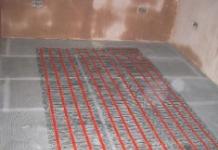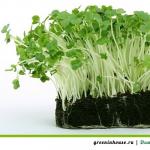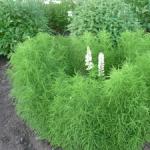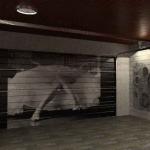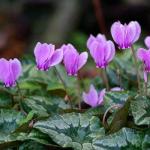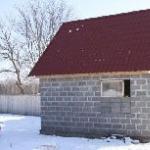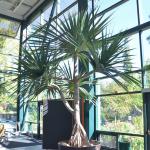Wind turbines have been used as a source of electricity for decades. For the first time, people began to exploit such structures when they curbed the power of nature and began to build mills. Today, wind turbines of the third generation are used to generate electricity. Moreover, the structures themselves are acquired in Lately more and more unusual forms.
A modern wind turbine consists of the following elements:
- Anemometer. It is responsible for measuring the wind speed and transmits the relevant information to the wind turbine controller.
- Blades. The wind, falling on these elements, causes them to rotate. As a result, a turbine is driven, which generates electricity.
- Brake. It is supplemented by mechanical, hydraulic and other drives. The braking system in a wind turbine is necessary to stop the rotor in case of critical situations.
- Controller. Responsible for managing the entire installation. He is in automatic mode starts wind turbines and stops them running.
- induction generator. The device generates electricity. It is complemented by a high speed shaft.
- Gondola. It is located at the top of the wind turbine. The gondola body hides most of the installation's structural elements, including the brake and controller.
Depending on the type of construction, the wind turbine can be supplemented with other elements. In particular, modern installations equipped with a fairing that catches the wind and enhances the power of the latter.
Advantages of turbines

wind turbine modern type has the following benefits compared to its predecessors:
- Capable of operating in high wind speeds. Turbines of a modern type operate when wind flows exceed critical indicators (25–60 m/s).
- Does not create infrasonic waves. Wind turbines of previous generations had this disadvantage.
- Easy installation. The basis of the design is created even in production. Separate elements are installed on site and the gondola is mounted on the mast.
- Application innovative materials. They not only increase the service life of the installation, but also provide ease of installation.
Wind turbines are mainly mounted along the sea and ocean coast or directly on the water. This approach makes it possible to achieve almost year-round operation of the turbine.

Modern developments
Among the disadvantages that blade installations have are the following:
- they violate the natural thermal balance;
- relatively low efficiency, not exceeding 30%;
- occupy a large area;
- pose a danger to birds.
These shortcomings force developers around the world to look for new technological solutions to generate wind energy. Recent achievements include:
1. Soaring turbine.

Structurally, it resembles balloon filled with helium. Inside, a turbine with three blades is installed on a horizontal axis. Such a system is currently in operation in Alaska. The soaring turbine is located at a height inaccessible to modern wind turbines. Such a system can function in almost offline(staff participation is kept to a minimum).
2. Vertical turbines.

Their blades repeat the arrangement of the fins of fish. Due to this design, the turbines are able to generate a sufficient amount of electricity, while being on close range from each other. Length vertical installations is 9 m. For effective work system requires the installation of at least two closely spaced turbines. According to preliminary studies, the new type of plant produces 10 times more electricity in comparison with bladed counterparts, occupying an equal area.
3. Carbonaceous "stems".
Implemented in the UAE new project for generating clean electricity. It involves the installation of 1203 carbon "stems" on a 20-meter base. The height of this structure is 55 m. Each separate element systems are located at a distance of 10 m from each other.
The thickness of a single stem at the base is 30 m. Inside them are layers consisting of alternating electrodes and a piezoelectric material. Under pressure, the latter generates electricity. Energy arises at the moment when the stems sway in the wind. This system generates the same amount of electricity as other wind turbines occupying the same area.
Something similar was created by Tunisian scientists. Their system differs from the carbon stems used in the UAE in that it has a silent generator on top, resembling a satellite dish.
In Holland, it was proposed to install a small structure on each house, capable of generating electricity under the influence of wind power. This wind generator has a turbine that repeats the shape of a snail shell. She, capturing the flow of the wind, turns around and changes the direction of its movement. The performance of such a wind generator reaches 80% of the theoretical performance that such installations can potentially demonstrate.

IN last years there were developments intended for installation on sailing ships. In general, the number of systems that can replace bladed wind turbines is constantly increasing. Perhaps in the future they will be able to solve all the problems facing wind energy.
While there are many more advanced ways of generating energy today, wind turbines were used almost everywhere in the past. Of course, they are still used today, but the number has decreased significantly. To understand how they work, it is important to know that wind is a form of solar energy.
general description
Wind turbines operate using wind currents. But why is the wind capable of generating electricity? This phenomenon occurs due to the fact that the earth's atmosphere is unevenly heated, the structure of the planet's surface is irregular, and also because it rotates. Wind turbines, or wind generators, are capable of converting kinetic mechanical energy, which can later be used for some other tasks.
How exactly are these devices made? electrical energy using normal wind? In fact, everything is quite simple. The principle of operation of such a turbine is directly opposite to the operation of a fan. Under the influence of the force of the wind, the blades of the wind turbine turn, which, in turn, cause the shaft to rotate, which is connected to a generator that produces electrical energy.
Turbine types
There are several different types of turbines. Engineers distinguish two main categories currently in use. The first category is horizontal-axial and the second category is vertical-axial. The first type of wind turbine has the most common design, which includes two or three blades. Units with three blades work on the principle of "against the wind". The elements themselves are installed so that they look at the wind.

One of the largest turbines in the world is GE Wind Energy. The power of this device is 3.6 megawatts. It is worth noting here that the larger the turbine, the more efficient it is. In addition, the benefit-to-price ratio also improves with increasing unit size.
General performance of turbines
The first indicator by which the device is selected is power. If we take "service" turbines, then their power can start from 100 kW and reach several MW. It is also important to note that both vertical and horizontal wind turbines can be grouped together. Such groups are most commonly referred to as wind farms. The purpose of such sites is the wholesale supply of electricity to the desired object.
If we talk about small single turbines, whose power is less than 100 kW, then they are most often used to supply electricity to private houses, telecommunications antennas or to supply energy to water transfer pumps. It should be noted that small turbines can also be used in combination with accumulators or solar panels. Such a system is called a hybrid system. They are used in places where there is no other way to connect to electrical network.
Benefits of vertical turbines
Currently, the vertical type of devices is much more often used. This is justified by the fact that the vertical type has a number of advantages over the horizontal ones.
On towers of a vertical type, the load will act more evenly, which makes it possible, as a simpler creation of a larger structure in terms of its dimensions. In addition, to install the rotor on this type of turbine, there is no need for additional equipment. An important advantage that increases work efficiency is that the blades of vertical turbines can be made twisted - in the form of a spiral. This is very important, since in this case the wind energy will act on them both at the input and at the output, which, of course, increases the efficiency of the installation.

One of the most important advantages of vertical turbines is that when they are installed, there is no point in adjusting the axis to the wind flow. This type of device will work with a stream of wind blowing from either side.
Bolotov wind turbine
This setting stands out from the rest of the devices. For normal operation the turbine does not need to be adapted to various kinds of weather conditions. The wind power element of this design is able to perceive the wind from any side, without any tuning operations. In addition, this type of station does not require the tower to turn when the wind direction changes. Another advantage of vertical wind turbines (VAWT - wind power plant with a vertical generator shaft) is that they have a special design that allows you to work with wind flows of any power. Operation even during storms is possible. It is possible to choose the number of installation modules. The output power of the turbine will depend on their number. That is, by changing the number of modules, you can change the power of the unit, which is very convenient. Another advantage is that the wind force element is assembled in such a way that it can be converted from high efficiency kinetic energy into mechanical.

Dimensions of the Biryukov and Blinov wind turbine
This device has a two-story rotor with a diameter of 0.75 m. The height of this element is 2 m. Under the action of fresh wind, such a rotor was able to completely spin the rotor of an asynchronous shaft with a power of up to 1.2 kW. The turbine could withstand the force of the wind without breakage up to 30 m/s.

It is worth talking about why the wind turbine is considered the achievement of two scientists. The thing is that in the 60s. in the USSR, the scientist Biryukov patented a carousel with KIEV 46%. However, a little later, engineer Blinov was able to use the same design, but with an indicator of 58% KIEV.
Turbines of a hyperboloid type
The hyperboloid-type wind turbines were based on the ideas of such an engineer as Shukhov Vladimir Grigoryevich.
The features of this type of turbine include the fact that it has a larger working area of the wind flow. If we compare this indicator with other categories of devices, then the hyperboloid type shows results by 7-8% better, if we count from the swept area. This indicator is valid for those types that have work zone wind flow winged. If we compare this type, for example, with Darrieus and Savonius turbines, then the difference will be 40-45%.

TO special properties This category of units should also include the fact that they are able to work with ascending air flows. It is very productive if you install the generator near a lake, swamp, hillside, etc.
The advantages of such turbines include the fact that the line of contact of the active layer of air, which washes the hyperboloid, will be 1.6 times longer than that of a similar cylinder rotating as a rotary wind generator. Naturally, this implies that the coefficient useful action will be the same amount.
Flaws
Despite the many advantages and features of these turbines, they also have a number of some disadvantages.
The negative factors include the fact that when the generator blades rotate against wind currents, this type of generator will incur significant losses, which, in turn, will lead to a decrease in work efficiency by about half. The decrease in this indicator is very noticeable if we compare vertical turbines with horizontal ones, which do not have such losses.
Another disadvantage is that vertical wind generator must be very long. If you place it close to the ground, where the wind speed is much lower than on high altitude, then there may be problems starting the rotor, which needs a push to start working. By itself, it does not start at all. You can, of course, install special towers to raise the blades higher, but the lower part of the rotor will still be too low.
Other disadvantages include the fact that in winter icicles will form on the blades of wind turbines. Also worth noting a large number of the noise that the turbines emit during operation. Some of the installations are even capable of producing harmful infrasound during their operation. It causes vibration, which can cause glass, windows, dishes to rattle.

Fun fact: RimWorld's wind turbines were used as a power source.
Minerals extracted from the bowels of the earth and used by mankind as energy resources, unfortunately, are not unlimited. Every year their cost increases, which is explained by a decrease in the level of production. An alternative and growing option for energy supply is wind farms for the home. They allow you to convert wind energy into alternating current, which makes it possible to meet all the needs for electricity of any household appliances. The main advantage of such generators is absolute environmental friendliness, as well as free use of electricity. unlimited amount years. What other advantages does a wind generator have for a home, as well as the features of its operation, we will analyze further.
 Even ancient people noticed that the wind can become great helper in doing a lot of work. Windmills, which allowed turning grain into flour without spending own forces, became the founders of the first wind turbines.
Even ancient people noticed that the wind can become great helper in doing a lot of work. Windmills, which allowed turning grain into flour without spending own forces, became the founders of the first wind turbines.
Wind farms consist of a certain number of generators capable of receiving, converting and storing wind energy into alternating current. They may well provide an entire house with electricity that comes from nowhere.
However, it must be said that equipment and maintenance costs are not always cheaper than the cost of central electricity networks.Advantages and disadvantages
 So, before joining the supporters of free energy, you need to realize that wind farms have not only advantages, but also certain disadvantages. From positive aspects
the use of wind energy in everyday life, the following can be distinguished:
So, before joining the supporters of free energy, you need to realize that wind farms have not only advantages, but also certain disadvantages. From positive aspects
the use of wind energy in everyday life, the following can be distinguished:
- the method is absolutely environmentally friendly and does not harm environment;
- simplicity of design;
- ease of operation;
- independence from power grids.
Home mini-generators can either partially provide electricity or become a full-fledged substitute for it, transforming into power plants.
However, one should not forget about flaws, which are:
- high cost of equipment;
- payback comes no earlier than after 5-6 years of use;
- relatively small efficiency factors, which causes power to suffer;
- requires expensive equipment: a battery and a generator, without which the operation of the station is impossible on calm days.
In order not to waste a lot of money, before buying everything necessary equipment, the profitability of the power plant should be assessed. To do this, calculate the average power of the house (this includes the power of all electrical appliances used), the number of windy days a year, and also evaluate the area where the windmills will be located.
Main structural elements
The simplicity of building a power plant is explained by the primitive structural elements. To use wind energy need these details:
To use wind energy need these details:
- wind blades - capture the wind flow, transferring momentum to the wind generator;
- wind generator and controller - contribute to the conversion of the pulse into direct current;
- battery - stores energy;
- inverter - helps to convert direct current to alternating current.
Wind is a form of solar energy. Winds are caused by the uneven heating of the atmosphere by the sun, the irregular structure of the earth's surface and its rotation. The trajectories of the wind flow are changed by the landscape of the earth, masses of water and vegetation. People use the wind or the energy of its movement for many purposes: for sailing, flying a kite, and even for generating electricity. The terms "wind power" and "wind power" describe the process of using wind to generate mechanical energy or electricity. Wind turbines (wind generators) convert the kinetic energy of the wind into mechanical energy, which can be used for a number of specific tasks, such as grinding grain or pumping water.
So how do wind turbines produce electricity? Simply put, a wind turbine works in the opposite direction of a fan. Instead of using electricity to create wind like a fan, wind turbines use wind to generate electricity. The wind turns the blades, which turn a shaft connected to a generator that produces electricity.
This top view of the "wind power plant" shows how a group of wind turbines can produce electricity for consumer grids. Through transmission and distribution lines, it enters homes, businesses, schools, and so on.
Types of wind turbines
Modern turbines fall into two main groups: horizontal-axial and vertical-axial, similar to the "beaters" of the Darrieus model, named after its French inventor. Horizontal axis turbines typically have two or three blades. These three-blade turbines work "upwind", with the blades facing the wind.
The 3.6 megawatt GE Wind Energy turbine is one of the largest ever installed:

Turbines bigger size more efficient. And in terms of price too.
Wind Turbine Dimensions
The size range of "service" scale turbines ranges from 100 kilowatts to several megawatts. Large turbines are grouped together into "wind farms" that carry out wholesale supply electricity in the power grid.
Small single turbines below 100 kW are used to power houses, telecommunications antennas, or power water transfer pumps. Small turbines are sometimes used in combination with diesel generators, batteries and solar panels. These systems are called "hybrid wind systems" and are used in remote locations where connection to the electrical grid is not possible.
Inside a wind turbine

| Anemometer |
Anemometer |
Measures the wind speed and transmits the speed data to the controller. |
| Blades |
blades |
Most turbines have either two or three blades. The wind passing through the blades causes them to “take off” and rotate. |
| brake |
Brake |
Disc brake, mechanically, electrically or hydraulically actuated to stop the rotor in critical situations. |
| controller |
Controller |
The control controller starts the machine at wind speeds of approximately 8 to 16 mph and shuts off the machine at approximately 55 mph. Turbines do not operate at wind speeds above 55 mph because strong winds can destroy them. |
| gear box |
Transmission |
Mechanically connects the low-speed turbine shaft to the high-speed one, increasing the rotation speed from 30…60 rpm to 1000…1800 rpm, which is the speed required by most generators to generate electricity. The gearbox is an expensive (and heavy) part of a wind turbine, and engineers are researching "direct drive" generators that operate at lower rotational speeds and don't need gearboxes. |
| Generator |
Generator |
Usually a standard induction generator that produces 60 Hertz AC power (US). |
| high speed shaft |
high speed shaft |
Drives a generator. |
| low speed shaft |
low speed shaft |
The rotor rotates this shaft at a speed of about 30 ... 60 revolutions per minute. |
| Nacelle |
Gondola |
The nacelle is at the top of the tower and contains the gearbox, low and high speed shafts, generator, control controller and brake. Some gondolas are large enough for a helicopter to land on. |
| Pitch |
Blade reversal |
Blades Turns into or at an angle to the wind to control the speed of the rotor and prevent rotation in winds that are too strong or too weak to generate electricity. |
| Rotor |
Rotor |
the blades and hub together are called the rotor. |
| Tower |
Tower |
Towers are made of steel pipe(shown here), concrete or have an openwork design. Since wind speed increases with height, more tall towers allow turbines to capture more wind energy and produce more electricity. |
| wind direction |
Direction of the wind |
There are so-called "upwind" turbines, because during operation they are turned "face" to the wind. Other turbines are designed to operate downwind, facing away from the wind. |
| wind vane |
Vane |
Detects the direction of the wind and sends data to the control controller to orient the turbine according to the direction of the wind. |
| Yaw drive |
gondola drive |
The upwind turbines must face the wind and the nacelle drive is used to correct the direction of the rotor for changes in wind direction. "Lee" turbines do not require a rotor drive, as the wind blows in their "back". |
- As for the blades (with a horizontal axis), I liked the article from the magazine "Modeler-Constructor", 1993, No. 8. http://publ.lib.ru/ARCHIVES/M/%27%27Modelist-konstruktor%27%27/%27%27MK%27%27,1993,N08.%5Bdjv-002%5D.zip It is intelligibly painted and principle of action and how to do it.
- Rather than watch such press, it is better to read (thoughtfully) Fateev's book "Wind turbines and wind turbines"
- With regards to industrial wind turbines dzen +1 [B] Three blades as a compromise between On the one hand, the desire to ensure the structural strength of the blades and reduce dynamic loads, reduce the cost of wind turbines by reducing the number of blades, provide allowable level aerodynamic noise and vibrations, which increase with an increase in the speed of movement of the ends of the blades and, on the other hand, the desire to increase the efficiency of the wind turbine, which grows with an increase in the speed of the wind turbine and the number of blades. [I] Textbook "Wind turbines and wind turbines" Fateeva E.M.
- The 3-blade turbine has a constant moment of inertia about the orientation axis, independent of the position of the blades, therefore, when orienting the windmill, vibrations do not occur. 2-blade shakes when orienting.
- RE: Why 3 blades / Vitaliy71 Well, for the first time, the efficiency is just the highest for a single-blade, but it is dynamically unbalanced. And the two-blade sound is blatant, but the three-blade is the last one with a high coefficient, since an increase in the blade over 3 ... 5 DOES NOT CHANGE the efficiency, but it strongly reduces the rotation SPEED, which means material consumption
- Depending on the speed of the windmill, for a maximum of KIEV, there is optimal ratio filling of a wind turbine and depends little on the number of blades, an ideal turbine is an infinite number of infinitely narrow blades. The most balanced are 3, 6, 12, 18, ... , 3 is the minimum number.
- And the sound of the two-blade did not bother me, although I sharpened the wrong edge due to inattention.
- is this about a gigawatt??? But the usual (not caught) wind also causes a wide range of sound vibrations (including INF), chaotically pressing on leaves, tree branches, windows and walls of buildings. And even in an open field, the wind presses on a person’s ears. Thunderstorms and earthquakes are also infrasound generators. Insects and some plants (tumbleweeds) can be carried away by air currents. Ban all this now! :)))
- Yes, this is nonsense, rumors that were financially supported in the 80s by the owners of thermal power plants. The problem with megawatt windmills is that birds (especially in cold weather) stick around and crap them, if there are holes inside, they try to make nests inside. I have seen nests in windmills.
- Lord good afternoon. You have interesting conversations, but I apologize for my question, but did anyone assemble the Gorlov turbine (http://www.quietrevolution.com/) I did it, but it doesn’t spin even in strong winds if anyone knows what the secret is (somewhere there is a raisin where I don't know)
- Looks like another person wants to step on a rake. There is a simple truth, confirmed theoretically and practically, and more than once - all verticals are made for beauty, but not for work.
- This so-called. the throat turbine is a conventional Darrieus rotor twisted into a spiral to reduce sudden short-term loads. But in addition to reducing loads, KIEV falls heavily and therefore, in order for it to spin, it is necessary to make very high-quality blades and have a strong wind. Well, it’s good to use it only for beauty or promotion of some kind of investors for money.
- That is, no one knows what it takes to make it spin?
- Quality blades and strong wind.
- The profile of the blades must be accurate, flat belts will not work. Plus, a good wind and you need to accelerate it to operating speed, the turbine itself will not accelerate even with a good wind. Against a windmill with a horizontal axis, its KIV is almost 3 times less. It looks beautiful, do not say anything :)
- wing airfoil? And for overclocking, you can use the Savonius rotor.
- It has been proven by calculations and practice that the blade profile (chord) should be close to ideal, the front plane reflecting the wind flow along the angle of attack where excess pressure is created can be flat, but the back plane of the blade, in order to create a greater air pressure difference behind the blade than in front of it, it should not be convex evenly creating rarefaction of air masses. Maybe something is wrong?
- Yes, look at any atlas of airfoils and see what they are, these profiles.
- Yes, I am aware of them.
- In large turbines (relatively) the blades are controlled indirectly, from the outside. At least in the Crimea, at the wind farm, the control was from a personal computer, depending on the load, speed, etc.
Incredible! But soon it will happen. Alternative energy sources of the third generation will turn the whole world upside down. The start has already been made. Wind turbines are the electric power future of mankind.
Introduction
Although alternative species energy, such as wind turbines, for example, is still undeservedly little attention, they continue to develop intensively. Perhaps soon powers of the world they will understand that insane mining does more harm than good, and natural species power engineers will firmly enter our everyday life. This hope is closely related to the fact that a third generation wind turbine was announced some time ago.
What is a third generation wind generator
It is traditionally accepted that the first generation of devices that converted wind energy were ordinary ship sails and mill wings. A little over a century ago, with the development of aviation, a second-generation wind generator appeared - a mechanism based on the principles of wing aerodynamics.
It was a breakthrough of that time! Although, if taken as a whole, then second-generation windmills are low-power, because due to design features cannot work in strong winds. Therefore, in order to receive more electricity, it was necessary to increase in size, which entailed additional financial expenses development, production, installation and operation. Naturally, it couldn't stay that way for long.
In the early 2000s, ready-made developers announced the appearance of a third-generation wind generator - a wind turbine. The design, principle of operation, installation, and most importantly, the power of the new device is fundamentally different from its predecessors.
Device
Simplicity. This is exactly the word that can be used to characterize the design of a wind turbine generator. Compared to bladed wind turbines, a wind turbine has a much smaller number of working units and much more fixed elements, which makes it more resistant to various static and dynamic loads.
Wind turbine device:
- fairing, it can be internal and external;
- fairing of the turbogenerator assembly;
- gondola;
- turbine;
- generator;
- dynamic fastener.
From additional systems The wind generator is equipped with inverting, accumulation and control units. There are no systems for adjusting the blades and orienting to the wind, traditional for a bladed wind generator. The latter is replaced by a fairing, which also acts as a nozzle, catches the wind and increases its power. If we take into account that the energy of the wind flow is equal to its speed cubed V3, then due to the presence of a nozzle, this formula looks like this: V3x4 = Ex64. At the same time, due to its cylindrical design, the fairing has the ability to self-adjust to the direction of the wind. 
Advantages
Any New Product or an invention must always stand out in a significant way from its predecessors, and necessarily in better side. All this can be said about the new wind generator with a turbo design. One of the main advantages of a wind turbine is its resistance to strong winds. Its design is designed in such a way that it will operate efficiently and safely beyond the limits that are critical for conventional bladed windmills: from 25 m/s to 60 m/s. But this is not the only advantage that a wind turbine has, there are several of them:
- Absence of infrasonic waves. Finally, scientists managed to solve one of the important issues possessed by wind turbines. It is precisely because of the existence of such side effect APU (wind power plant) was criticized by opponents alternative energy, infrasound adversely affects the surrounding living environment. But now, due to the absence of infrasonic waves, a turbine-type wind generator can be installed even in urban areas.
- The absence of blades removes several tasks at once that faced the designers and manufacturers of the wind generator. First, significant expenditures of forces and funds for the operational control of bladed windmills are removed. Second, the wind wheel blade is the most complex element wind generator in production. The lion's share of the cost of a conventional wind turbine is the cost of manufacturing the blades. In addition, there are cases when, with strong gusts of wind, the blade broke, scattering fragments hundreds of meters.
- Easy assembly and installation. All complex structures or components are manufactured and assembled by the manufacturing plant, only final stage assembly and installation on the mast. Plus, the lightness of structural elements makes it possible to use the most common lifting equipment when installing a wind generator.
- Connection diagram. In contrast to the bladed APU, the turbine is connected via standard scheme. This fact is not affected by the specifications, which puts forward future owner WEU.
- The long service life is due to the materials from which the wind generator and its individual parts are made. Considering preventive work, which are mandatory for the operation of a wind turbine, the service life of the device can be up to 50 years.
- Insecurity of bladed wind turbines.
- The infrasound they emit.
- The minimum wind speed for the operation of a bladed wind generator is 4 m/s.


Geography of turbine APU operation
the most real and the best place wind turbine installation will be on the shore of a lake or sea. Near water bodies, such a wind generator will work practically all year round, because thanks to its nozzle device, it is very sensitive to light breezes and other slightest manifestations of wind with a speed of 2 m/s.
With the same success, VST will work within the city, where a conventional wind generator is unable to work for a number of well-known reasons:
An interesting fact that proves the advantage of WTU
One of the cornerstones on which the position of opponents of alternative energy is based is that wind farms interfere with the operation of location equipment. During operation, the wind generator interferes with the passage of radio waves. Given the size of individual wind farms, and they can range from several tens to hundreds of square kilometers, it is understandable why the governments of many countries have begun to block alternative energy projects at the state level - this is a direct threat to national security. 
For this reason, a French company that manufactures components for wind turbines has taken on difficult task from the point of view of performance - to make the wind power plants directly invisible to radars, and not the space around the wind generator. For this, the experience gained in the manufacture of Stealth aircraft will be used. New components are planned to be launched on the market in 2015.
But where is the fact that proves the advantage of the VST over the bladed wind turbine? And the fact is that wind turbines do not interfere with the operation of location equipment even without expensive Stealth technology.
Prospects for the development of alternative wind energy
The first attempts to start using a wind turbine in industrial scale undertaken in the middle of the last century, but were unsuccessful. This was due to the fact that oil resources were relatively cheap, and the construction of wind power stations was unprofitable. But literally 25 years later, the situation has changed radically.
Alternative energy sources began to develop intensified in the 70s of the last century, after the pace of mechanical engineering increased sharply in the world and countries faced an oil shortage, which led to the 1973 oil crisis. Then, for the first time, the non-traditional energy sector in some countries received state support and the wind turbine began to be used on an industrial scale. In the 80s, the world wind energy began to become self-sustaining, and today countries such as Denmark, Germany and Australia are almost 30% self-sufficient at the expense of alternative sources energy, including wind farms. 
Unfortunately, and perhaps, and fortunately, last year's trend in the oil market with an unstable oil price makes us seriously think that the times when cheap oil was good are in the past. Today, for many countries, the cheaper oil is, the more profitable it is to develop non-traditional energy, first of all, this applies to the CIS countries. Therefore, there are prerequisites for the development of wind energy. How it will be - we'll see.

